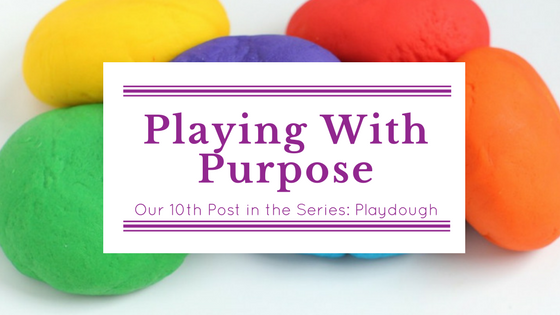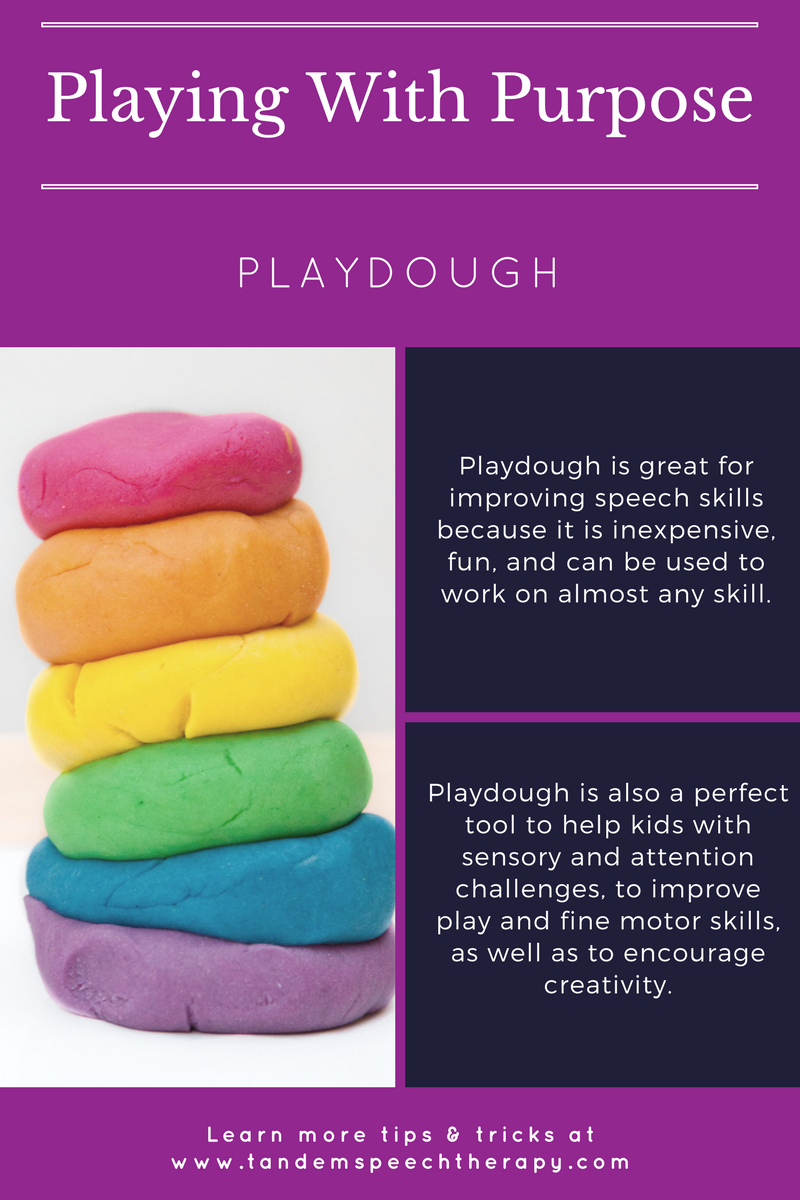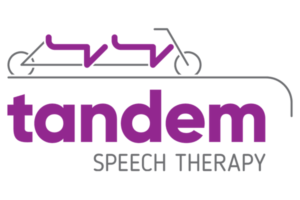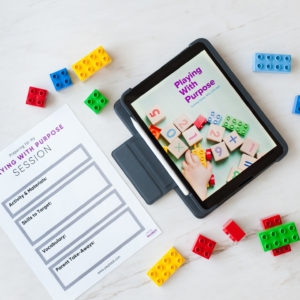
This week marks my 24th blog post and the 10th in my Playing With Purpose series. While I am proud of myself for undertaking this blog writing, I want to commend you (parents, caregivers, therapists, and readers) for your efforts to increase language opportunities for children during play. I know it is not always easy. You have a lot on your plate already. Pat yourself on the back for increasing your consciousness and intentionality as you do the ultimate job of parenting.
As Maria Montessori once said, “Play is the work of the child.” Children can learn so much during play. From the day they are born, your kids soak up a plethora of information during interactions and play. Here are the 5 ways children learn speech and language skills during play:
- Children WATCH your mouth as you talk, your facial expressions, and your body language. Later, they use this information to imitate and incorporate those actions into their play.
- Children LISTEN to all the sounds you make, the words you say, and the sentences you form. As time goes on, your child will imitate the sounds and words to communicate with you.
- Children EXPLORE the things around them and manipulate them. This is how children start to “play.”
- Children IMITATE your actions and the sounds they hear around them. This begins with the coos you hear at just a few months of age and progresses to babbling and soon real words. Gross motor imitation like clapping and waving is also hugely important. Early gross motor imitation is a precursor to language or a pre-language skill.
- Children FORMULATE and use language for a purpose. All the skills your kids have been working on–the watching, listening, exploring, and imitating–helps your child begin to create and formulate their own words and sentences.
Keeping all of this in mind, playdough is the focal point for the 10th Playing With Purpose post. Playdough is excellent to use for speech and language stimulation because it is inexpensive, fun, and can be used to work on almost any skill. Kids of all ages enjoying digging in, not just preschoolers!. Playdough comes in many different forms. There is the name brand Play-Doh, and you can find great recipes to make your own. I especially like kinetic sand, Model Magic, or a newer product I just learned about called Mad Matter. No matter which of these you and your children pick out, you are destined to have fun and learn in the process.
Playdough can be used with young children to build early language skills. It can be used to help children improve their speech sound production or to work on phonology skills. Playdough is a fun tool for skills like sequencing, following directions, and answering wh-questions. Simultaneously, playdough is perfect to help kids with sensory and attention challenges, to improve play and fine motor skills, as well as to encourage creativity.

In honor of my 10th Playing With Purpose post, I give you my Top 10 Tips for Playing With Purpose using Playdough:
- Multi-syllable words can be challenging for little mouths to coordinate. Often kids leave out parts of a word. Use playdough balls on the table to illustrate multi-syllable words. The child can squish their finger into the balls as they say each syllable. Practicing the word “hamburger,” make three little balls and squish-squish-squish.
- Use simple shape cutters and a rolling pin to make playdough cookies. When the child has finished building their cookie, have them retell the sequence or the steps. Encourage the child to talk about what they did first, next, and last so you can build a matching cookie.
- Target following directions by giving specific cookie decorating instructions. For example, “Roll some pink playdough into a ball and put in on top of your cookie.” Vary the number of instructions you give based on your child’s skill level. If extra assistance is needed, try drawing a picture of the cookie design to provide a visual cue.
- For kids just beginning to talk, I suggest using a Hanen strategy. Take a tub of Play-Doh and place it in front of the child, but do not open it. Can you guess why you would not open the container, knowing the child cannot do it himself? It provides an opportunity for communication or initiation. In this instance, I would model the sound “oh” to represent open or the word “open.” Then wait for his communication attempt and reinforce the child by opening the container.
- Activities with playdough are rich with vocabulary opportunities. You can highlight verbs such as roll, cut, squeeze, push, smash, open, close, and take out. You might model descriptive words for size, shape, quantity, and color.
- Use playdough to illustrate bumpy versus smooth speech for children who are working on improving their fluency or decreasing stuttering. Make a bumpy/wiggly line out of playdough on the table and a smooth/straight line next to it. Then you can talk about and model the different types of speaking as you trace the line with your finger.
- Playdough is a great behavior reinforcement tool. It can help keep fidgety hands busy, so your child can focus on listening to a story. Give your child a small blob of playdough before you begin reading, along with instructions to keep it in their hand and squish it quietly while listening. If your school-aged child is struggling to pay attention in class, consider discussing this idea with their classroom teacher.
- Barrier games are a fun way to work on clear and concise sentence formulation as well as descriptive words. Put up a barrier (such as a book or a folder) between you and your child. If this is a new concept, I suggest you model with the first turn. Mold something out of your playdough and then use simple sentences to describe it to the child. See if they can use their playdough to build the same item. Compare and discuss your creations at the end.
- If your child is working with a pediatric speech therapist on specific speech sounds, playdough is a fun activity to use with their homework words. Use playdough to build objects that start with their target sound. For example, you can build items that begin with /s/-blends like a snake, stop sign, star, steps, school, etc.
- Pick your favorite homemade playdough recipe and make it with your child. This will be a great opportunity to connect and spend quality time with your child. Plus recipes target following directions and sequencing. Then use your new creation in any of the activities described above!
Now it’s time to get out and start Playing With Purpose using playdough!
Be the 1st to Get Our Upcoming PWP eBook
Schedule a Playing With Purpose coaching session
Start Playing With Purpose
Learn how to purposefully and intentionally interact with your child during play and help them increase opportunities for speech and language development with our Playing with Purpose book!











